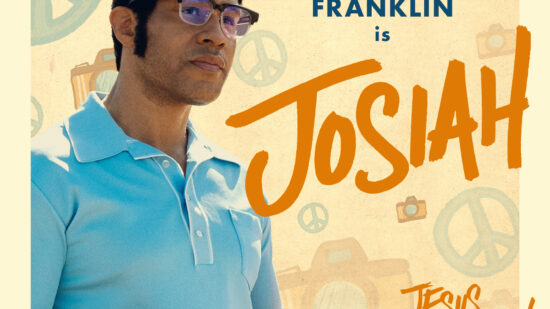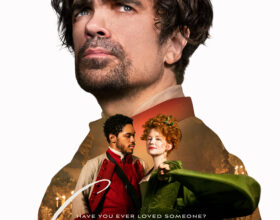This is a gripping and powerful drama, packing a lot of insight and dramatic weight into the 26-minute runtime. There are unforgettable images in the film, including those of the stripes and blood on Jesus, and the look in the thief’s eyes when he realizes Jesus has forgiven him of his sins, and that he will dwell with him that very day in paradise. The blood on Jesus’ body is seen in one scene and when the viewer sees the blood washed away from his feet by a rain following the crucifixion, the image will not soon be forgotten.
Directed by Dallas Jenkins and based on a screenplay by Jenkins and Tyler Thompson, the entire short film hits the right notes. One thief is called Demas, portrayed by actor Stelio Savante. The other is named Benyamin, portrayed by Christopher Maleki. Jonathan Roumie portrays Jesus and Richard Cotovsky plays the insurrectionist, Barabbas, who is freed in place of Christ. The combination of fine acting and dramatic music drives the story home.
The film opens with words appearing on the screen, which explains with how the Romans extended their control on the Jews with heavy taxation, which benefited the mother city of Rome. And anyone who opposed the Romans were severely punished as a warning to other zealots. Next, we see two prisoners in a cell, chained, and talking about their fate. It is the two thieves of the Bible, who will soon be crucified next to the Son of God. One says, “How much longer?” The other prisoner replies, “Are you in a hurry?” He goes on to say, “It could be hours, or days. Whatever is convenient for them.”
One of the prisoners says that once they were slaves, referring to their Egyptian bondage. “We are slaves no more!” declares the other prisoner, which draws a laugh from a third prisoner that we didn’t know was with them at first. His name is Barabbas and he is soon freed when Roman guards enter the cell. The others are told that Barabbas is freed in place of a carpenter, and the two remaining prisoners will die with him.
The film includes the scriptural account of both thieves dying on the cross next to Jesus, but it uses some creative license in showing how the two thieves committed their crimes and were captured. We do not know if any of this is based on history or legend-or is simply a creative account by the writers. But it is totally plausible that what is shown could have occurred. In one dramatic scene one of the thieves is shown in a flashback, wondering why his father left him at a young age. “Father, why did you forsake me?” he asks aloud.
One of the interesting aspects of this film is trying to figure out which thief is going to repent on the cross and turn to Jesus. I will say that the viewer might be surprised and that is one of the other blessings of this film. It clearly shows that the person steeped deepest in sin can still turn to the Lord and be forgiven of his/her sins.
When the thieves are finally called to go meet their fate on crosses, we instantly see the bloody ground where Jesus has been beaten with a whip. A few brief scenes of this punishment are shown. We also see the three thieves, suspended on the crosses, with blood on their bodies and nails clearly seen driven in their wrists and feet. At first, both thieves rail on Jesus, one mentioning his miracles and stating it was just a cheap magician’s trick. “The whole world knows you are a liar!” claims one of them. Mary, Jesus’ mother, is seen at the feet of the cross.
Jesus cries out, “My God, my God, why have You forsaken me?” and then says, “Father, forgive them, for they know not what they do,” and one of the thieves is moved. He sees the compassion and powerful forgiveness in Jesus. The acting in this scene is very moving. It is then when he repents and says, “Remember me, when you come into your kingdom.” “Truly I say to you,” Jesus responds, “today you will be with me in paradise.” As previously mentioned, when the trio are all seen dead, a strong rain and wind follows and the scene of the blood being washed away from Jesus’ feet is powerful and unforgettable.
This film does show the crucifixion in a realistic, but in a fairly brief manner. It has merited our Dove seal for Ages 12+. It’s recreation of Biblical scenes are gripping. It will move a lot of viewers. Parents must decide if their children a bit under 12 should see it.
The Dove Take
This movie packs a lot of emotion and unforgettable moments into its short time and families everywhere will be touched while viewing it.





